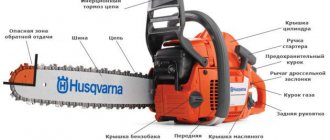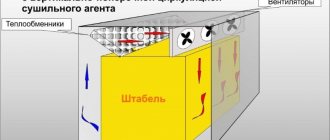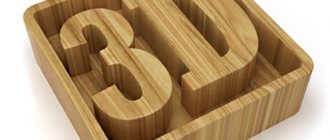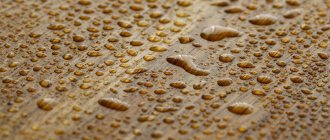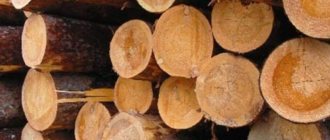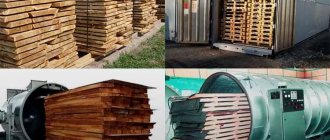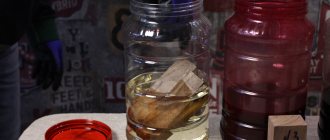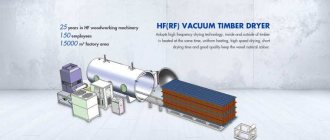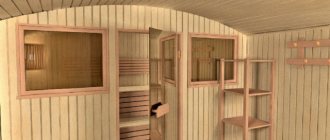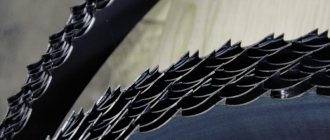Advantages of lumber dryers and areas of use.
The lumber dryer is used for drying wood located in a stack; it was developed by specialists from the Impulse company. The lumber dryer is a set of thermoactive cassettes, the thickness of which is 1.5 mm.
Advantages of the Flexichit infrared wood dryer:
- Equipment for drying boards can be used both outdoors and indoors;
- The dryer installation process does not take much time;
- Saves energy as much as possible;
- Makes it possible to dry small volumes of wood;
- The use of cassettes for drying lumber meets all necessary quality standards, which makes it possible to achieve a moisture content in wood of no more than 8% .
The technology of drying lumber is a very responsible and labor-intensive process. The wood that has been prepared for drying must be stacked, and the cassettes must be placed in a certain sequence. To control the drying mode of boards, it is necessary to use a three-position thermostat, which sets the required temperature for the layers of the stack.
Main options
We will look at several solutions that are most popular among developers and home craftsmen; they are also perfect for small businesses. Each option has its own characteristics, so you need to choose the best one yourself.
Drying chamber
When choosing how to quickly dry wood at home, many give preference to building a special structure, but this option is suitable only for those who need to periodically bring the material to a certain humidity; building a dryer for one-time use is at least too expensive, as for the work process, it is as follows :
- First, you need to prepare drawings of a wood dryer with your own hands, taking into account the dimensions of your lumber and its approximate volume. If you are not very strong in design, then you can find a ready-made project or remake an existing version taking into account your characteristics; you don’t need a perfect drawing, the main thing is an accurate calculation of all dimensions and parameters;
An example of a project that is perfect for those who dry material in small volumes
- You need to choose the location of the structure. For safety reasons, we recommend placing it at a safe distance from other objects, because it is impossible to constantly monitor the process, so it is better to exclude the option in which a fire in the chamber would pose a danger to nearby buildings;
- Now you need to decide on the construction material; the easiest and fastest way is to use an aluminum or metal frame, which is sheathed with the same sheets; this is the most fireproof option. But you can also use brick, if available, since if you need to buy the material, then metal will cost much less;
An example of a metal frame for a dryer, this can be erected very quickly, the main thing is to have all the necessary materials and welding equipment
- The foundation for a building can be of any type: columnar, pile, strip or monolithic. The most important thing is that the base ensures reliability and can easily withstand all the loads that arise during use, and they are not small, because the mass of the wood that is placed in the chamber is quite large and may even be greater than that of the building itself;
For unstable soils, the best option would be to use a slab option reinforced with a reinforcing belt
- The metal frame is constructed either using welding equipment or by bolting; in the first case, the structure will be non-demountable, and in the second it can be disassembled if necessary. There are special elements on sale for creating such structures, but you can also use improvised options - corner, channel, round or profile pipe, etc.;
- The outer surface is sheathed with a metal sheet, it can be ordinary tin or corrugated sheeting, which looks much more attractive and costs almost the same as simple options. For work, special self-tapping screws with a drill tip and a hexagonal head of 8 are used;
This DIY wood dryer can be built literally in one day.
- On the inside, it is necessary to lay thermal insulation material - mineral wool, the thickness of the layer should be at least 100 mm, and better yet 150, in order to retain heat in the space as efficiently as possible. All surfaces except the floor are insulated, waterproofing material is laid on it and a layer of sawdust is poured for additional moisture absorption;
Important! Don’t forget to insulate the gate as well; many people overlook this nuance and during use a lot of heat is lost through the door block.
- As for heating, either an option with radiators located on one side and heating with wood can be used, in this case one or two fans are additionally installed for air circulation, or a heat gun, which can run on diesel fuel and, in addition to generating heat, will provide circulation air.
You can weld a radiator from pipes along the length of the building
Now we’ll tell you how to dry wood correctly:
- The board or beam is laid through spacers so that there is space between them for air movement;
- In the first 18-20 hours, the air in the room is gradually heated to 45 degrees, the ventilation is closed and moisture should appear on the walls;
- Next, the supply and exhaust ventilation is opened by a third and heating continues up to 50 degrees, this should take about two days;
- Then the ventilation opens completely, and the temperature rises to 55 degrees, the process continues until the moisture content of the material reaches 8%, after which the heating is turned off, and the fans continue to work for another half day or day.
As you can see, the process instructions require precision; this guarantees an excellent result and no deformation of the material.
If you have built a dryer, then you cannot do without a material moisture meter
Infrared options
A modern version of the dryer is an infrared tubeless system, which has a number of differences from the solution described above:
- To dry the material, you do not need to build a special structure; a dry, ventilated room is enough, and even if there is none, you can get by with a canopy to protect it from precipitation;
- The system consists of thermoactive cassettes, which are produced in the form of sheets 1.5 mm thick, they are stacked every three rows and heat the material from the inside, this makes it possible to do without the construction of a chamber to maintain a high temperature and without a ventilation system;
The weight of the elements is small, so they are convenient to transport if necessary and use directly on site
- To ensure the best efficiency, especially if the process is carried out under a canopy, it is recommended to cover the stacks with a special heat-reflecting material, but, in extreme cases, a regular tent will do.
It is worth noting that this option is also good because it can be used to dry any number of materials - from a couple of boards to entire stacks; accordingly, a different number of thermoactive panels will be used.
If you are engaged in wood carving, making souvenirs and other work that uses small elements, then you can use this work option as drying wood in the microwave.
The process is done like this:
- You need a microwave oven with power control; if the modes are electronic, then there must be a “Defrost” function;
- The workpiece is wrapped in newspaper and placed in a bag in which holes are made and placed in the microwave, small elements for 1 minute, medium ones for 2, and large ones for 3 minutes;
- The tree is removed and left in the bag for 40 minutes, after which the process is repeated, you just need to change the newspaper. The number of stages may be different, it is ideal to have a moisture meter on hand, if you don’t have one, then the workpiece is weighed before the first drying and the procedure is repeated until the mass decreases, this is the first sign that the humidity has become much lower.
The microwave will help you quickly dry small items.
Design and principle of operation of a board dryer.
The technology used for drying boards is very simple; an infrared tubeless cassette dryer is used. Installation of the equipment is very simple, while the drying process itself meets all necessary standards. It is also possible to effectively and timely influence drying modes, consistent with the quality of the lumber.
Operating principle of a tubeless cassette dryer.
The principle of operation of a tubeless cassette board dryer is that the cassettes are stacked in a certain sequence. In order to achieve the necessary humidity inside the wood, with minimal energy consumption. It is advisable that the stack be covered with a special material with a reflective layer (foil) such as armofol. This is necessary so that the condensate that collects drains outside the stack.
The board dryer mode is controlled by a thermostat, which controls the temperature of the heaters. The drying time for wood depends on the wood used and the initial amount of moisture in it, as well as air humidity. This determines the time of the lumber drying process itself, which can range from three to seven days .
One of the most important factors in using the dryers we offer is that boards can be dried using a small amount of lumber.
Tubeless Infrared Wood Dryer from Manufacturer
When steaming, moisture evaporates from the middle of the wood. I have no idea how this process occurs when wood is locally heated. I also don't understand why you can do without fans.
Why is it steamed with saturated steam when processing wood? In order to saturate the wood with moisture and dry evenly at a speed at which moisture will migrate from the inner layers to the outer.
When using low-temperature infrared emitters, moisture is already “expelled” from the inner layers, which leads to intensive selection (condensation) of water in the first quarter of the drying process and removal of moisture. No steaming needed.
But in chambers it is needed because the coolant is hot air, and it does not penetrate into the wood; it dries slowly, starting from the surface. Therefore, you can’t rush, you need to wait for the water to capillary from the center to the surface.
Ultrasound, high-frequency frequency, and induction tear wood - it’s clear why. I think that your method should tear no less, but even more. Are you also trying to heat the wood from the inside?
We have a soft mode, this is natural drying, so there will be no tearing. This refers specifically to the rupture of pores, capillaries, non-surface ruptures and cracks that occur due to uneven drying of the board.
Do you have experience organizing a lumber dryer in the basement? What pitfalls might there be? A bath for collecting water is planned under the drying area. The temperature in the basement is above zero.
“Pitfalls” depend on the volume and frequency of drying. We must expect that not all the water condenses - some comes out as steam, and if there is no good ventilation, the basement walls will get wet. With constant operation of the wood dryer, the basement may gradually warm up, and the high temperature outside the stack shell will change the dew point, and condensation may decrease. Ventilation is required if the room is small. Up to 300 liters of water can come out of a cube of pine, 500 from oak.
How to operate a wood dryer in winter? How to control and regulate air humidity? How high is the stress in the material after drying?
Steam collects in the chamber and reaches such a concentration that drying stops and the steam must be removed. Paradox: the chamber is needed to retain air, but it increases humidity. Therefore, wood drying is possible when the following mode is used: “heating the air - ventilation - pumping out moist air - heating again.” And when acting directly on water without a camera, everything works out easier. We use isospan to ensure uniform humidity in the stack and speed up the drying of the wood.
Installation of a lumber dryer and preparation for work.
As mentioned earlier, installation of an infrared dryer for lumber does not take much time, but at the same time it is a complex set of equipment, the installation of which requires qualified specialists. The whole process is controlled automatically, but at the same time requires a certain order in preparation for work.
At the beginning of work, it is necessary to check the serviceability of the electrical circuit of the heaters, this is done using an ohmmeter, after which it is necessary to check the integrity of the outer shell of the heater. There should be no kinks, scratches or burns on the surface.
Work on connecting the heater must be carried out when the network is disconnected. Before turning on the dryer, the cassettes must be located in a certain sequence in a stack that is prepared for drying lumber. You can find video instructions for making one of the stack shell design options on our website.
Drying chambers
The main component of infrared dryers is an emitter with a horizontally rotating cylinder, which includes a solid welded conveyor screw.
The processed substance is supplied continuously by means of a volumetric dispenser onto a solid auger of a rotating cylinder, distributing it evenly through the drying. The drying time of the substance depends on the rotation speed of the cylinder and is precisely adapted to the operating parameters.
At the end of the rotating cylinder, the substance falls into the output accumulator and can be transferred to the next stage of the process.
Our infrared dryers are used in various fields.
Infrared drying technology is applicable for drying any loose granules, grains, flakes or granular powders. The infrared drying idea does not require a dry air supply and is therefore particularly suitable for applications with high initial humidity.
Areas of use
- Drying plastic granules (e.g. ABS/PC, PC, LCP, PP compound + sawdust)
- Crystallization and drying of PET, PPS, PLA (recovery/granules)
- Drying with high initial humidity > 1%
- Heating of granules and recovery before further processes (e.g. PVC, PE), e.g. to increase extruder throughput
- Heating to remove residual oligomers and volatiles
- Drying in the food, feed and pharmaceutical industries
- Roasting coffee beans
Special benefits for PET and PLA
Traditional applications for infrared dryers are plants for the crystallization and drying of PET granules. Thermoformed film pellets and recycled bottles are processed at a throughput of 150-1500 kg/h. Flexes can also be mixed with granules of the primary material - separation will not occur during drying.
Significant potential for infrared drying technology is the drying of PLA, virgin, granular or mixed raw materials. The continuous movement of the material in the infrared dryer is especially ideal for granular PLA scraps, which tend to stick to each other during the crystallization process at t = 60 °C.
Heating in infrared dryers
In addition to drying, simple heating is also a good application because... the granules can be heated in the dryer (while being mixed) to a temperature close to the melting point without forming clumps. Infrared dryers are also used in processes in which volatile components or residual oligomers must be removed from the product. Another application is heating highly sensitive substances before plasticizing in an extruder (especially for cold climates).
Infrared oven type A
| Type | Diameter (mm) | Furnace length (mm) | Radiators power (kW) | Throughput* (kg/h) |
| IRD-A-40/90 | 400 | 900 | 9 — 15 | 10 — 100 |
| IRD-A-50/90 | 500 | 900 | 9 — 15 | 10 — 150 |
Type B
| Type | Diameter (mm) | Furnace length (mm) | Radiators power (kW) | Throughput* (kg/h) |
| IRD-B-70/180 | 700 | 1800 | 18 — 48 | 70 — 500 |
| IRD-B-90/180 | 900 | 1800 | 18 — 60 | 80 — 600 |
| IRD-B-120/180 | 1200 | 1800 | 18 — 90 | 120 — 800 |
| IRD-B-70/260 | 700 | 2600 | 27 — 72 | 100 — 700 |
| IRD-B-90/260 | 900 | 2600 | 27 — 90 | 110 — 800 |
| IRD-B-120/260 | 1200 | 2600 | 27 — 135 | 180 — 1200 |
Type C
| Type | Diameter (mm) | Furnace length (mm) | Radiators power (kW) | Throughput* (kg/h) |
| IRD-C-120/340 | 1200 | 3400 | 36 — 168 | 220 — 1500 |
| IRD-C-140/340 | 1400 | 3400 | 36 — 216 | 250 — 1600 |
| IRD-C-160/340 | 1600 | 3400 | 36 — 264 | 350 — 2200 |
| IRD-C-180/340 | 1800 | 3400 | 36 — 312 | 550 — 3500 |
| IRD-C-120/540 | 1200 | 5400 | 54 — 288 | 350 — 1800 |
| IRD-C-140/540 | 1400 | 5400 | 54 — 360 | 550 — 2500 |
| IRD-C-160/540 | 1600 | 5400 | 54 — 450 | 600 — 3000 |
| IRD-C-180/540 | 1800 | 5400 | 54 — 540 | 1000 — 5000 |
* The table shows approximate values. The design of furnaces is made in accordance with the request.
